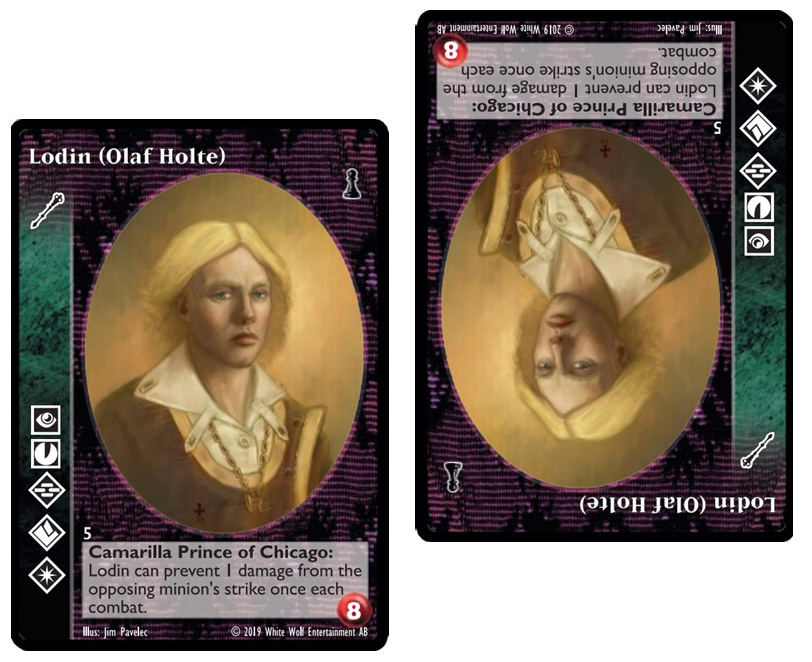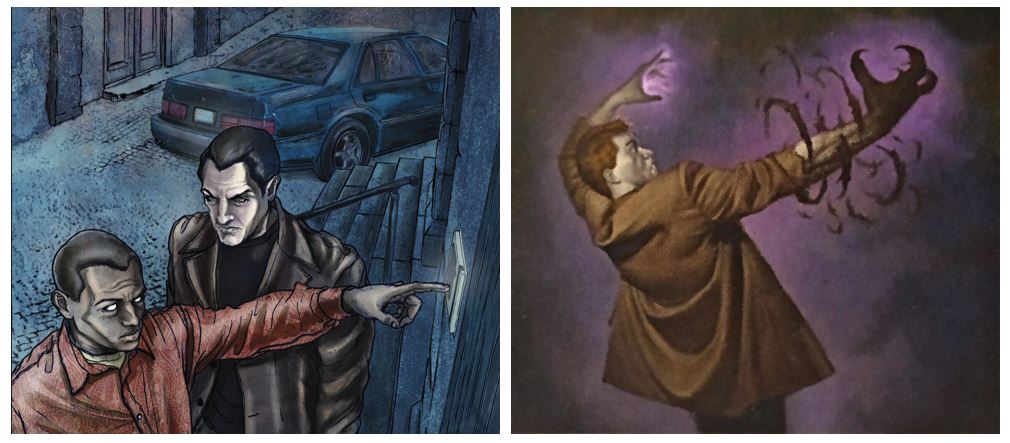
Greetings Methuselahs
We’re all committed to the rules of Vampire: The Eternal Struggle conceived 25 years ago. The impact of some rules has changed as the game has changed. One of those rules is vampire contestation. We have moved from having few crypt options to having large numbers of crypt options, but when contestation occurs the impact can be more severe with larger numbers of “key vampire decks” now in existence. We wish to examine if there are ways to reduce the impact of contestation and reduce the random element.
We would like you to test the following changes for non-tournament games:
- A contested vampire remains in play. Their controller must pay 1 pool to continue to contest them, or yield during the unlock phase, but can play with them normally (act, block, play cards, cast votes or ballots etc.). If this vampire has a title that is also contested, the vampire must pay 1 blood point to keep it, as usual.
- It is still forbidden to contest a vampire with oneself, and if this were to happen, the last vampire to enter play would be immediately burned, as usual.
- This concerns both vampires influenced from the crypt and unique vampires brought into play with library cards (Abomination, Call the Great Beast etc.)
- Unique library cards (including allies) and imbued are still unaffected by this rule change.
This change has already been tested in online league games, but we would like to have a lot more games adopting this rule in order to observe its influence on the balance of the game, the frequency of representation of “star” vampires etc.
We are especially interested in game reports including:
- Frequency: How many games had a vampire being contested / games played?
- The situation of the two (or more) players contesting (prey/predator? other?)
- For how long the vampires were contested. How did it end? How much blood was left on the vampire after the contest?
- Is the penalty balanced from their point of view? from the non-contesting players’ point of view?
- Are star decks appearing more often over time? (It can take time for the players to adjust to the new rule)
Below are answers to some questions you might have. We use Lodin as the example vampire.
Q: Can Lodin block another Lodin controlled by another Methuselah?
A: Yes.
Q: If there are two Lodin in play and I call a Banishment on “Lodin”, do I need to specify which copy I am choosing?
A: Yes. These are two different copies.
Q: If there are two copies of Lodin in play and one of them is burned, what happens to the other?
A: Nothing. However, since the controller of the remaining Lodin is not contesting anymore, that controller will not have to pay the contest any longer, and Lodin will get back his title during his next unlock phase (as usual).
Q: What happens if two Methuselahs contest the same vampire, and a third one puts a third copy in play?
A: The third copy is immediately contested. However, it remains in play and the third Methuselah will have to pay the contest cost as the two others (as well as paying the contest for the title, if any).
Q: If two copies of Lodin are contested and one of them yields his title, what happens to the other?
A: The other copy will get back his title during his next unlock phase (unless someone else contests the title!)
Q: Someone plays The Name Forgotten on Lodin who later gets burned. What happens to the other copies of Lodin?
A: They stay in play since The Name Forgotten only removes copies from the “crypts, uncontrolled regions and ash heaps”.
Please use one of these two Google Forms to deliver feedback:
– Game report sheet:
https://docs.google.com/forms/d/e/1FAIpQLSc4dzZ9rXXkHYPL_UD6KXWdcX5zX1RV36oTWrwyTxYnVs4QqQ/viewform
– Your Opinion sheet:
https://docs.google.com/forms/d/e/1FAIpQLSeenKxORn8O1bfRMoaFdZZzlzH0075HIKYK3ofi_hLCu4LVvQ/viewform
Do you have other questions? Discuss on the VEKN.net forum or VEKN at Facebook, or ask Black Chantry Productions on Facebook, Twitter, Instagram or contact@blackchantry.com.
Copyright © 2025 Paradox Interactive AB. www.paradoxinteractive.com. All rights reserved. Vampire: The Eternal Struggle and Vampire: The Masquerade® are trademarks and/or registered trademarks of Paradox Interactive AB. All rights reserved.




